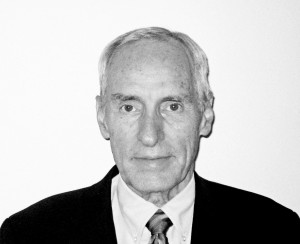From mobile gaming to educational programs that test technical know-how – gaming has infiltrated not only our phones but also our offices.
The banking industry is no exception to this trend towards gamification. Recent events have led to a new era that presents both new and complex challenges. To tackle these, it is imperative that key personnel acquire sharper management skills so that they are ready to act strategically in any given situation and with any new uncertainty.
For over three decades, Dr. Neil Seitz has been pioneering simulation games for the banking industry. His commercial career began in the 1980s when he was asked to develop a bespoke training tool for a major bank, which helped executives manage interest rate risk in response to fluctuating market conditions. His first simulation morphed into a suite of products focused on numerous facets of consumer banking, including foreign exchange rate risk, loan portfolio management, credit scoring, fraud, and collections management.
Dr. Seitz quickly realized that although simulation games alone couldn’t replace all other forms of training, they have the potential to be one of the most important tools in the educational toolbox. As he explains:
“It isn’t that I try to use a simulation for everything I want to teach—it’s that there are many things more effectively taught through simulation than from other techniques.”
~ Dr. Neil Seitz
Addictive Gaming for Bankers?
Although Seitz’s simulations cannot yet be placed into the addictive arena of mobile games Angry Birds or Animal Crossing, competitiveness is a key component. Players focus their attention on achieving a universal goal: maximizing profitability.
Players operate in their own identical marketplace in which they have to make decisions with the standard environmental uncertainties found in the real world. Despite it being a simulation game, the charts and reports that the player is exposed to essentially the same as those that would hit the desks of bank managers and executives.
Calibrating Theory with Reality
Having earned his Ph.D. in finance, Dr. Seitz is careful to ground each game in formal theory, “If the theories I teach my students can’t be put into these simulation games, then the theory isn’t going to have any relevance”. Dr. Seitz says, “Demand theory tells me that by raising the interest rate 1 percent demand [for money] would fall, but theory does not tell me how much it will fall. ” That’s why to ensure his simulations work accurately as possible, Seitz turns to senior industry executives for their valuable insight so that the theory can be carefully calibrated with reality.

The Secret to a Successful Simulation
What’s his secret? In a word: simplicity. For Seitz, a simulation must balance being complex enough with the variables to provide a realistic context, while still being simple enough so that the players can clearly identify the relationship between their actions and an outcome. We can achieve optimal learning only by keeping this careful balance between capturing the essence of the situation without becoming lost in unnecessary detail, can
Dr. Seitz compares the games he creates to flight simulators, “With a stick that moves in four directions, the player can fly the airplane to anywhere on earth and respond to an infinite variety of environmental changes. If a flight simulator has 150 different buttons to push and 40 different levers to pull, the student will not have the slightest idea of how her actions affected the outcome. …
The number one reason for failure in a game is that [a player] does an excellent job of catching every variable that might have the minutest impact, but by doing so lost focus on those that are key. … the secret of successful simulation game design [and improved student learning] is elegant simplicity.”
What Does the Future Hold?
Having observed the fallout from the global economic crisis, Dr. Seitz has turned his ambitions to develop a simulation that better equips executives to deal with worst-case scenarios and to navigate the emotional responses to dealing with crises. Observing students play his simulation games, Dr. Seitz noticed a broader story being played out in the confines of the classroom.
He observed, “The team that’s in first place continues to make very rational decisions. The team that’s fallen into last place begins to make irrational decisions. They lose the ability to focus and figure out what to do.”
This is another area where Dr. Seitz predicts that simulations could really come into their own; by placing participants into “simulated meltdowns” they can test their mettle, better understand how heightened emotion and stress influences their behavior and learn from their own experiences to improve profitability and performance.
Dr. Seitz teamed up with BankersLab to build out a robust Web Application platform that has evolved into a sophisticated suite of simulations that forms a cornerstone of BankersLab training. If simulations continue to successfully meet demands, they could well reach their potential of becoming an irreplaceable training component; playing a key role in safeguarding the fortunes of the banking industry, today.
Based on the research and our years of experience, we know that with careful development, gaming is beginning to pave the way to a brighter future.


